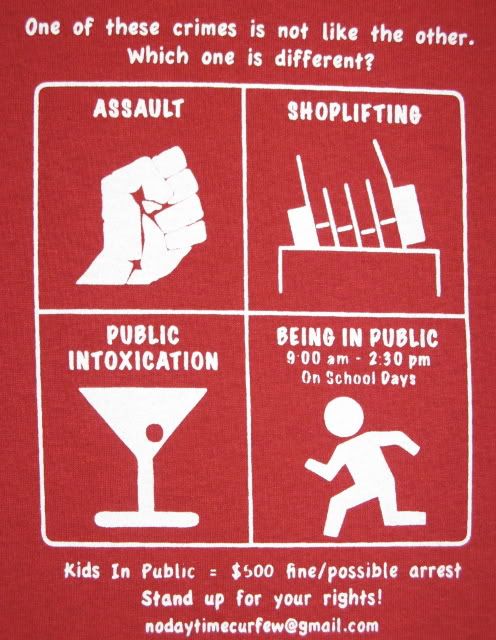On December 16, 2008, the Bedford City Council held a work session, inviting the HEB-ISD and Bedford Police Chief to present their case for the juvenile daytime curfew ordinance.
Hang on a minute. The Bedford police chief helped the HEB-ISD make its case? There's something wrong with that picture.
During the work session, the police chief honestly admitted that there were no numbers to show the effectiveness or measure the impact of a daytime curfew. However, he said that he views the daytime curfew as "another tool in their tool belt" in the fight against truancy.
The school district and police chief complained that the compulsory attendance statute is too cumbersome, does not offer a strong enough deterrent, and requires too many unexcused absences before a student can be appropriately punished for truant behavior. They stated that the daytime curfew would allow them to punish a child on a first-time offense - instead of the 10 required by the state compulsory attendance law - and would allow for "intervention very, very early," before the child moves on to bigger crimes.
Did you get that? They want to inflict a fine and Class C misdemeanor charge on a child on the very first unexcused absence. Does one unexcused absence make a child truant? Not according to state truancy laws.
The district and police chief maintained that the juvenile daytime curfew would offer an immediate and strong deterrent, and would hold the parent accountable, since the curfew stipulates a fine to the parent as well as the child.
I should point out that the ordinance not only inflicts a fine of up to $500 for the child as well as the parent, but also stipulates a fine on a business owner or employee if a minor is found on the premises. Couple that with the fact that the ordinance also carries a Class C Misdemeanor charge, per offender.
What the school district and police chief are saying is that they don't want to hassle with the compulsory attendance statute. They would rather take the law into their own hands through the juvenile daytime curfew, which lays all the burden on a parent, child and business owner. The school district, on the other hand, gets to shift its statutory responsibilities onto the cities, at taxpayer expense.
If the HEB-ISD feels that 10 unexcused absences are too many, a better approach might be for the district to appeal to the Texas legislature to reduce the number of unexcused absences allowed by the compulsory attendance statute, rather than bypassing those laws by asking cities to enact another law which unfairly infringes on the rights of so many other students who have a legitimate reason to be out in public and who are not enrolled in the HEB-ISD or follow their school schedule.
A homeschool dad brought everything into perspective during the Open Forum. Using the district's own numbers, he calculated that the urgent truancy problem for which the district claimed they needed immediate action, amounted to only 1% of the total school days. The district offered no trend analysis that would indicate that truancy was a growing problem, no comparisons to other school districts, in fact no statistical data at all.
The very thing the district was so proud to announce - the difference in truancy rates since enacting the curfew - amounted to just .1 of 1% - a statistically irrelevant figure. The district had no basis to justify such a gross infringement of liberties.
The debate in Bedford was heating up.
Subscribe to:
Post Comments (Atom)





No comments:
Post a Comment